Teaching Resources
Curriculum Artifact Boxes
from the 2009 Fulbright-Hays Group Project Abroad Award
Globalization’s Impact-Impoverishment Urban Workers & Unemployed Migrants and Solutions
by W. F. Santiago-Valles, Ph.D.
Project Director
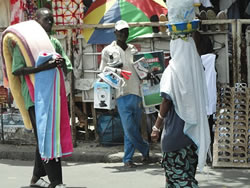 This unit is designed first to produce answers to: who profits from urban impoverishment? why are urban workers and unemployed migrants forced to live like this? what is the visual & documentary evidence of this historical process? how is the history of resistance to impoverishment and/or government violence remembered/adapted to present forms of struggle? how is local knowledge produced about the causes, consequences and alternatives to urban impoverishment (and its connections to corporate globalization)?
This unit is designed first to produce answers to: who profits from urban impoverishment? why are urban workers and unemployed migrants forced to live like this? what is the visual & documentary evidence of this historical process? how is the history of resistance to impoverishment and/or government violence remembered/adapted to present forms of struggle? how is local knowledge produced about the causes, consequences and alternatives to urban impoverishment (and its connections to corporate globalization)?
This unit is designed second to help students choose issues connected w/ consequences of corporate globalization, and to compare their impact on the U.S. Midwest region with their impact on the West Africa region.
This unit is designed third to support learning how the peers of North American students in West Africa are solving those problems, what students here need to learn in order to work together -with organized groups their W. African counterparts- solving problems they all share.
Globalization, Language and Literacy
by Yvette D. Hyter, Ph.D., CCC-SLP
Project Co-Director
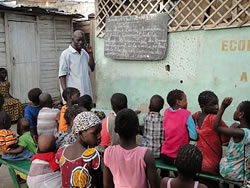 This curriculum unit, although designed for undergraduate and graduate level university courses, can be altered for various grade and age levels. The focus of this unit is two fold: First, for speech-language pathologists and other language and communication professionals, it focuses on the ways literacy should be redefined based on the current context of globalization, and on the consequences that globalization has on interactions between dominant and dominated languages and how those interactions inform the way these professions support language and literacy development. Second, for schoolteachers, this unit could be used to help them explain the consequences of globalization on language and literacy, and then identify ways to mitigate those consequences with the changing population in their classrooms.
This curriculum unit, although designed for undergraduate and graduate level university courses, can be altered for various grade and age levels. The focus of this unit is two fold: First, for speech-language pathologists and other language and communication professionals, it focuses on the ways literacy should be redefined based on the current context of globalization, and on the consequences that globalization has on interactions between dominant and dominated languages and how those interactions inform the way these professions support language and literacy development. Second, for schoolteachers, this unit could be used to help them explain the consequences of globalization on language and literacy, and then identify ways to mitigate those consequences with the changing population in their classrooms.
Globalization: An Introduction
by Ryan Bailey, Joy Bailey, and Jen Heymoss
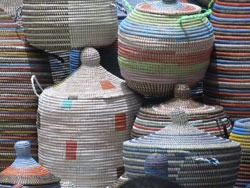 The focus of this unit is on giving students a basic understanding of how current trends in globalization perpetuate patterns of exploitation. The unit is then divided into a study of two manifestations of globalization: Immigration and how Non-Governmental Organizations (NGO’s) or non-profits try to alleviate the suffering caused by globalization. The unit concludes with two projects for the students to test their new understanding of the concepts they have learned. This unit, although designed for a middle/high school ELA or Social Studies course, can be altered for various grade levels.
The focus of this unit is on giving students a basic understanding of how current trends in globalization perpetuate patterns of exploitation. The unit is then divided into a study of two manifestations of globalization: Immigration and how Non-Governmental Organizations (NGO’s) or non-profits try to alleviate the suffering caused by globalization. The unit concludes with two projects for the students to test their new understanding of the concepts they have learned. This unit, although designed for a middle/high school ELA or Social Studies course, can be altered for various grade levels.
Globalization and Oral Traditions
by Dr. Charmane Echols
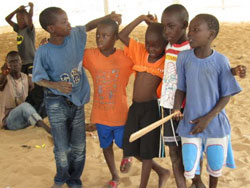 This unit of study was developed by a team of literacy specialist from Senegal West Africa and the Mid-West United States. It is designed for elementary, middle school and art education classroom teachers to use in correlation with their Social Studies curriculum. The unit’s objective is to teach the culture of West Africa folktales along with problem solving skills through myths and legends. Through the process of this unit, students will acquire an understanding, appreciation and acceptance of African cultures. Students will identify unique characteristics of African folktales and how it correlates with the stages of Applebee’s Schema. It covers, who, what, when, where, why and how griots used koras and songs to create and communicate history, by utilizing integrated curriculum lesson plans linking music, language arts and social studies.
This unit of study was developed by a team of literacy specialist from Senegal West Africa and the Mid-West United States. It is designed for elementary, middle school and art education classroom teachers to use in correlation with their Social Studies curriculum. The unit’s objective is to teach the culture of West Africa folktales along with problem solving skills through myths and legends. Through the process of this unit, students will acquire an understanding, appreciation and acceptance of African cultures. Students will identify unique characteristics of African folktales and how it correlates with the stages of Applebee’s Schema. It covers, who, what, when, where, why and how griots used koras and songs to create and communicate history, by utilizing integrated curriculum lesson plans linking music, language arts and social studies.
Senegal: Language and Diversity
by Michael Ruddy
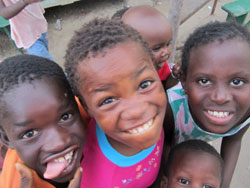 This curriculum unit, although designed for an eighth grade middle school course, can be altered for various grade and age levels. The focus of this unit is the dominant and dominated languages in Senegal, how globalization influences the position of these languages, and how language affects education, literacy, society, and government.
This curriculum unit, although designed for an eighth grade middle school course, can be altered for various grade and age levels. The focus of this unit is the dominant and dominated languages in Senegal, how globalization influences the position of these languages, and how language affects education, literacy, society, and government.
Diversity, Language and Communication
by Katherin L. Smoes, M.A., CFY-SLP
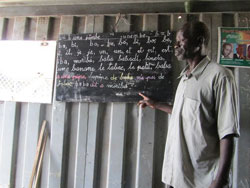 This curriculum unit, although designed for an early childhood classroom, can be altered for various grade and age levels. The focus of this unit is on cultural, linguistic and communication awareness and on encouraging critical thinking.
This curriculum unit, although designed for an early childhood classroom, can be altered for various grade and age levels. The focus of this unit is on cultural, linguistic and communication awareness and on encouraging critical thinking.
The Role of Access in Preparing Globally Competent Special Education Teachers
by Sarah Summy
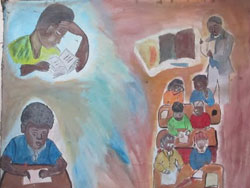 This curriculum unit is designed for undergraduate and graduate level university courses in teacher education. However, it could be altered and used for secondary education students by changing the title of unit to The Role of Access in Preparing Globally Competent Citizens. The focus of this unit is to further the development of critical literacy skills in pre-service teachers regarding the impact of globalization and the role that access plays in the disenfranchisement of so many people, more specifically individuals with disabilities.
This curriculum unit is designed for undergraduate and graduate level university courses in teacher education. However, it could be altered and used for secondary education students by changing the title of unit to The Role of Access in Preparing Globally Competent Citizens. The focus of this unit is to further the development of critical literacy skills in pre-service teachers regarding the impact of globalization and the role that access plays in the disenfranchisement of so many people, more specifically individuals with disabilities.
Food Security and Globalization
by Korin Visocchi
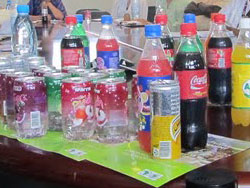 This curriculum unit, although designed for a high school course, can be altered for various grade and age levels. The focus of this unit is to construct an explanation of food insecurity in context of economic globalization and colonialism and explore institutions which function to maintain food deserts, food insecurity, and childhood obesity.
This curriculum unit, although designed for a high school course, can be altered for various grade and age levels. The focus of this unit is to construct an explanation of food insecurity in context of economic globalization and colonialism and explore institutions which function to maintain food deserts, food insecurity, and childhood obesity.
Curriculum Artifact Boxes
from the 2003 Fulbright-Hays Group Project Abroad Award
Culture in Migration
by Anya Wiley and Dr. Ibrahima Seck

Language Policy and Literacy
by Yvette D. Hyter, Ph.D. & Mr. Lamine Kane
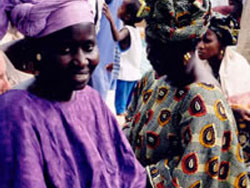 The Literacy and Language Policy Curriculum Artifact Box (Box #2) contains materials and course plans that can be used to contextualize the ways literacy is practiced in Senegal schools and educational institutions, such as the daaras or Qu'ranic schools and the women's literacy programs in the interior of the country.
The Literacy and Language Policy Curriculum Artifact Box (Box #2) contains materials and course plans that can be used to contextualize the ways literacy is practiced in Senegal schools and educational institutions, such as the daaras or Qu'ranic schools and the women's literacy programs in the interior of the country.
Islam in Africa, Globalization
by W.F. Santiago-Valles, Ph.D. & Dr. Ibrahima Thioub
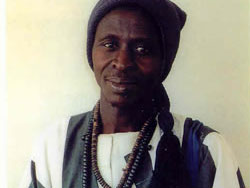 Islam in Africa & Globalization includes an inventory sheet, collected artifacts, an educational film, museum reproductions, translated recordings, as well as a 300 level college course plan that can be adapted for other grades, skill levels, and ways of learning.
Islam in Africa & Globalization includes an inventory sheet, collected artifacts, an educational film, museum reproductions, translated recordings, as well as a 300 level college course plan that can be adapted for other grades, skill levels, and ways of learning.
Family and Community Life
by Stephanie Evergreen & Mrs. Fatou Kandji
 This box contains materials to recreate a Senegalese meal and tea ceremony and to look into tracing personal histories, including sets of hand-carved teak wood hippopotamus families to represent different family structures.. Also, find children's literature written by Senegalese authors and search the webpage for other relevant books and resources. Each artifact is accompanied by a card describing the cultural context of the artifact, suggestions for how it can be used in the classroom, and how it may compliment other artifacts in the box.
This box contains materials to recreate a Senegalese meal and tea ceremony and to look into tracing personal histories, including sets of hand-carved teak wood hippopotamus families to represent different family structures.. Also, find children's literature written by Senegalese authors and search the webpage for other relevant books and resources. Each artifact is accompanied by a card describing the cultural context of the artifact, suggestions for how it can be used in the classroom, and how it may compliment other artifacts in the box.